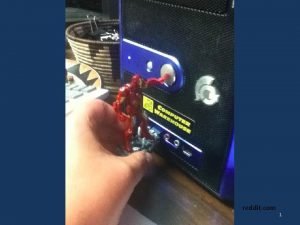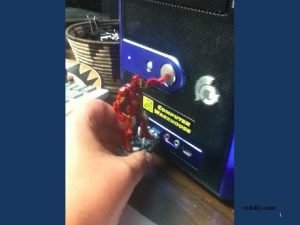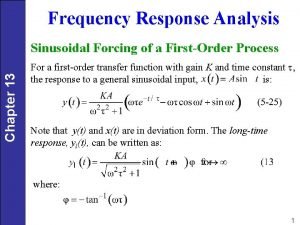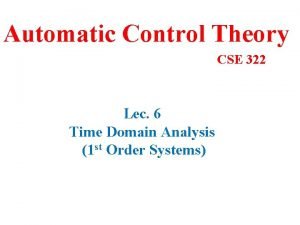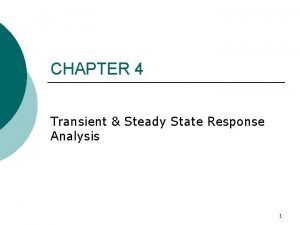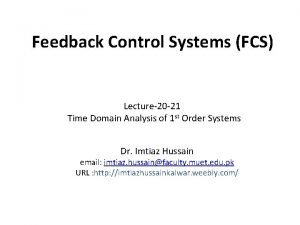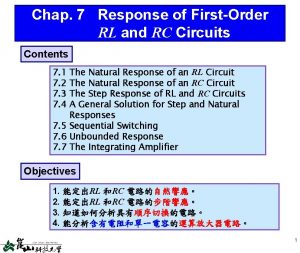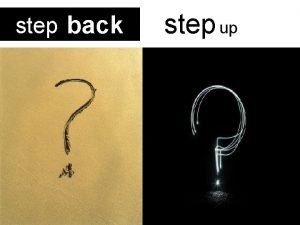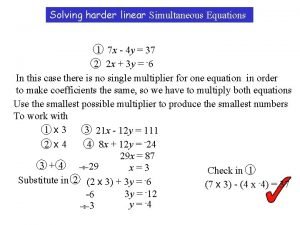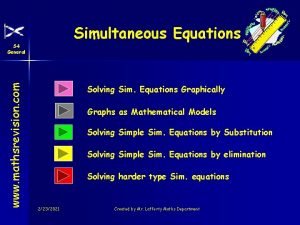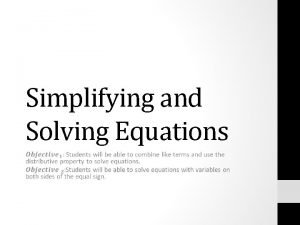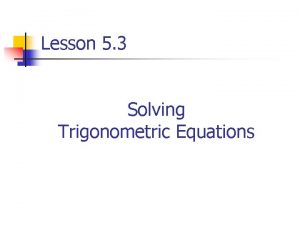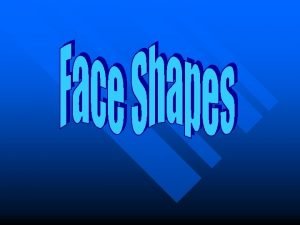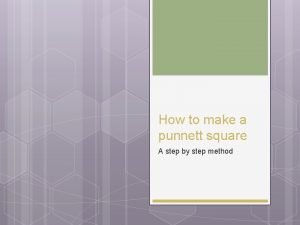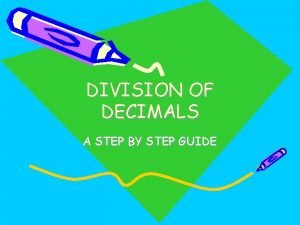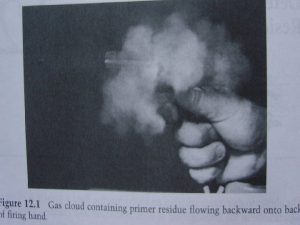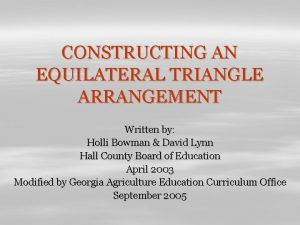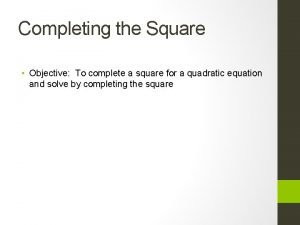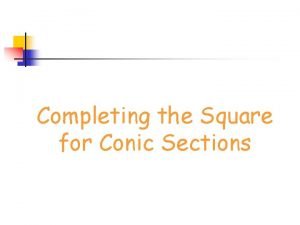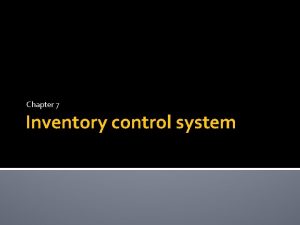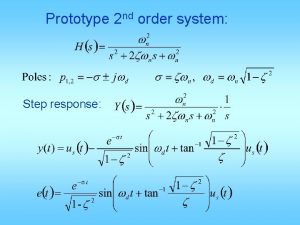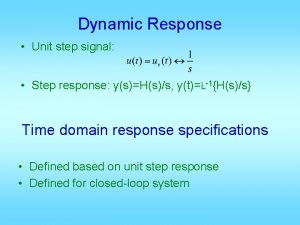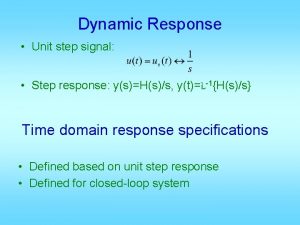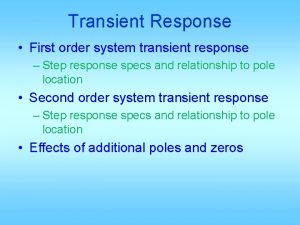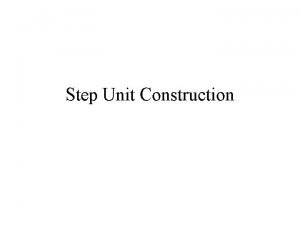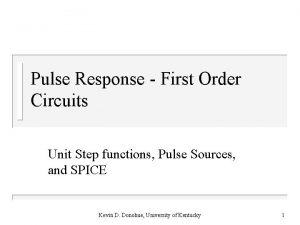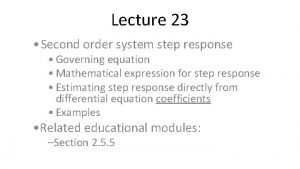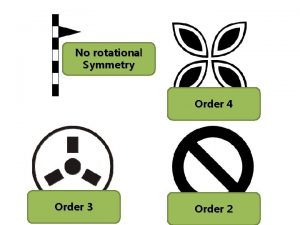Prototype 2 nd order system Unit step response









































- Slides: 41

Prototype 2 nd order system:


Unit step response: 1) Under damped, 0 < ζ < 1 Interesting case


To find y(t) max:


Recall the prototype 2 nd order system is type 1!



• Delay time is not used very much • For delay time, take • Set y(t) = 0. 1 and 0. 9, solve for t • This is very difficult • Based on numerical simulation:

Putting all things together: Settling time: = (3 or 4 or 5)/s

2) When ζ = 1, ωd = 0

The tracking error:

3) Over damped: ζ > 1


Transient Response Recall 1 st order system step response: 2 nd order:

By PFE, all TF = sum of 1 st and 2 nd order parts:

Pole location determines transient



• All closed-loop poles must be strictly in the left half planes Transient dies away • Dominant poles: those which contribute the most to the transient • Typically have dominant pole pair – (complex conjugate) – Closest to jω-axis (i. e. the least negative) – Slowest to die away

Typical design specifications • Steady-state: ess to step ≤ # % ts ≤ · · · • Speed (responsiveness) tr ≤ · · · td ≤ · · · • Relative stability Mp ≤ · · · %

These specs translate into requirements on ζ, ωn or on closed-loop pole location : Find ranges for ζ and ωn so that all 3 are satisfied.

Find conditions on σ and ωd.

In the complex plane :

Constant σ : vertical lines σ > # is half plane

Constant ωd : horizontal line ωd < · · · is a band ωd > · · · is the plane excluding band

Constant ωn : circles ωn < · · · inside of a circle ωn > · · · outside of a circle

Constant ζ : φ = cos-1ζ constant Constant ζ = ray from the origin ζ > · · · is the cone ζ < · · · is the other part

If more than one requirement, get the common (overlapped) area e. g. ζ > 0. 5, σ > 2, ωn > 3 gives Sometimes meeting two will also meet the third, but not always.


Try to remember these:

Example: + - When given unit step input, the output looks like: Q: estimate k and τ.



Effects of additional zeros Suppose we originally have: i. e. step response Now introduce a zero at s = -z The new step response:


Effects: • Increased speed, • Larger overshoot, • Might increase ts

When z < 0, the zero s = -z is > 0, is in the right half plane. Such a zero is called a nonminimum phase zero. A system with nonminimum phase zeros is called a nonminimum phase system. Nonminimum phase zero should be avoided in design. i. e. Do not introduce such a zero in your controller.

Effects of additional pole Suppose, instead of a zero, we introduce a pole at s = -p, i. e.

L. P. F. has smoothing effect, or averaging effect Effects: • Slower, • Reduced overshoot, • May increase or decrease ts
 Step 1 step 2 step 3 step 4
Step 1 step 2 step 3 step 4 Prototype 1 vs 2 reddit
Prototype 1 vs 2 reddit Prototype 1 vs 2 reddit
Prototype 1 vs 2 reddit Transient response specifications of second order system
Transient response specifications of second order system Knuckle like process at the end of a bone
Knuckle like process at the end of a bone 1st order 2nd order 3rd order neurons
1st order 2nd order 3rd order neurons Sinusoidal response of first order system
Sinusoidal response of first order system Automatic control
Automatic control Transient and steady state response
Transient and steady state response 1st order transfer function
1st order transfer function Natural response and forced response
Natural response and forced response Natural response circuit
Natural response circuit Primary immune response and secondary immune response
Primary immune response and secondary immune response Step response circuit
Step response circuit What are first order circuits
What are first order circuits Buccal pit molar
Buccal pit molar Creating a dinosaur sculpture type of graphic organizer
Creating a dinosaur sculpture type of graphic organizer Pbpa writing
Pbpa writing Steps of argumentative essay
Steps of argumentative essay Step back step up
Step back step up Factor quadratic equations
Factor quadratic equations How to solve simultaneous equations
How to solve simultaneous equations Simultaneous equations step by step
Simultaneous equations step by step Simplifying and solving equations
Simplifying and solving equations The process of photosynthesis step by step
The process of photosynthesis step by step Matlab particle filter example
Matlab particle filter example Oracle real application testing
Oracle real application testing Netbackup bare metal restore step by step
Netbackup bare metal restore step by step Solving trigonometric functions
Solving trigonometric functions Naomi campbell face shape
Naomi campbell face shape Bb x bb genotypic ratio
Bb x bb genotypic ratio How to use viva video step by step
How to use viva video step by step Fusioncompute installation guide
Fusioncompute installation guide Negative cosine graph
Negative cosine graph Division
Division Dermal nitrate test
Dermal nitrate test Equilateral floral arrangement
Equilateral floral arrangement Complete the square steps
Complete the square steps Conics completing the square
Conics completing the square Balance chemical equations
Balance chemical equations Step-by step inventory process
Step-by step inventory process Is it balanced
Is it balanced

